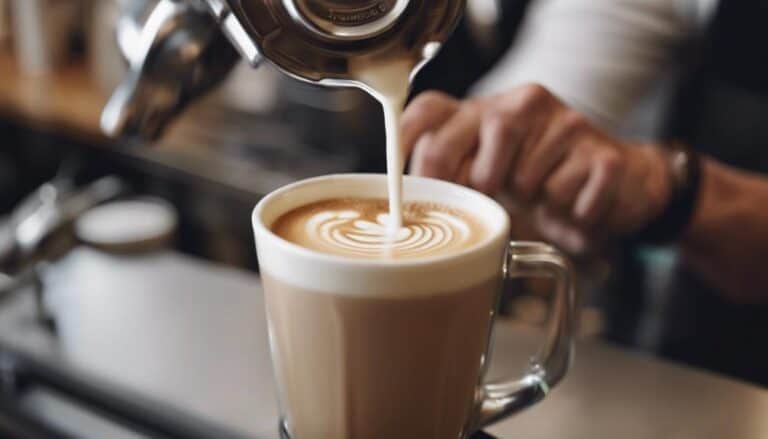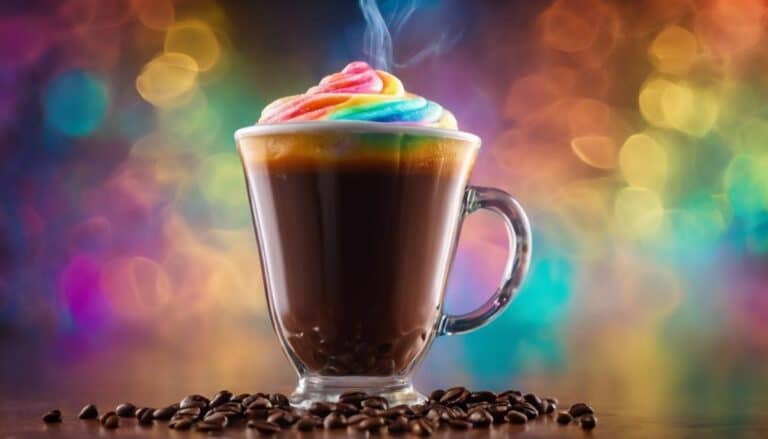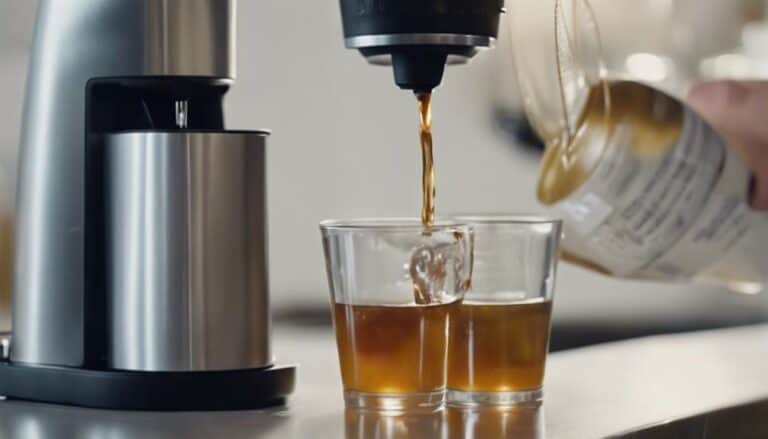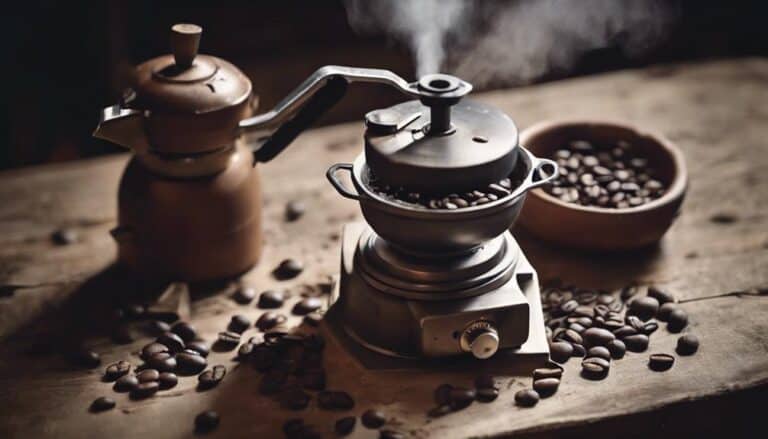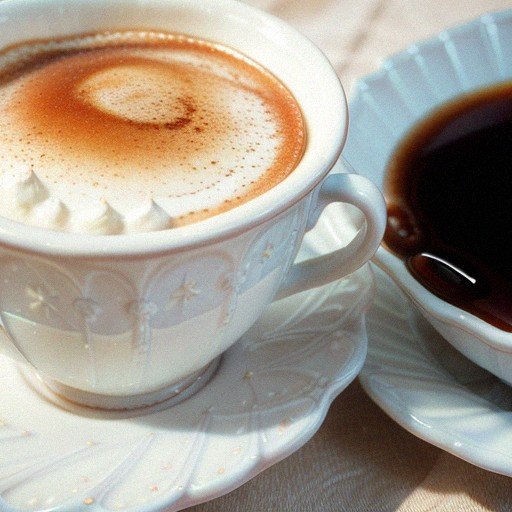The Perfect Temperature for Brewing Coffee
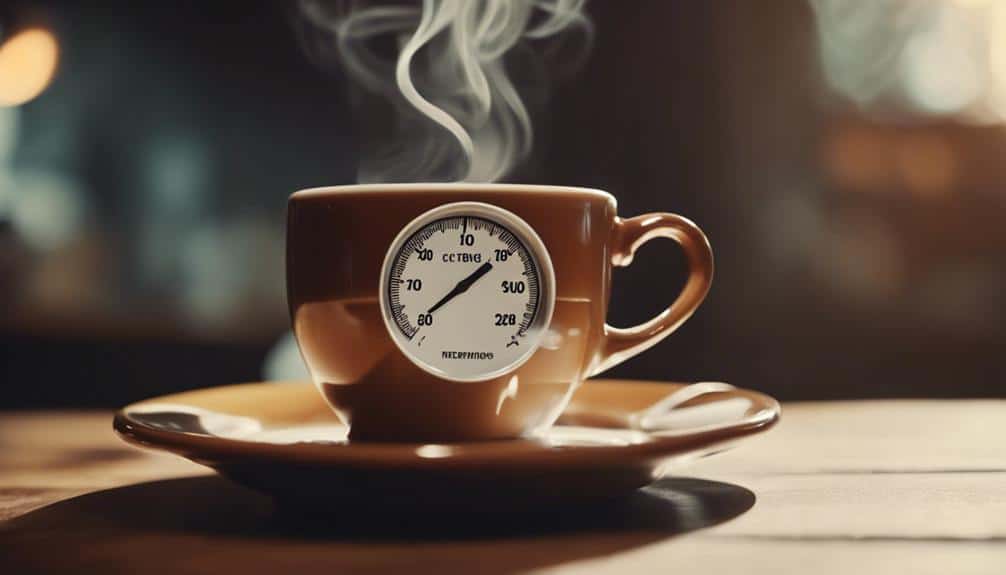
As a coffee enthusiast, I've always been intrigued by the science behind the perfect cup. The temperature at which coffee is brewed plays a pivotal role in capturing the essence of the beans and delivering a delightful sensory experience. Finding that ideal balance can be a journey filled with experimentation and precision. So, how does one determine this elusive perfect temperature that transforms a simple brew into a symphony of flavors? Let's explore the intricate dance between heat and coffee beans to uncover the secrets of achieving that sublime cup of coffee.
Importance of Brew Temperature
Understanding the brew temperature's significance is essential to discovering the full potential of your coffee brewing experience. Water temperature plays a key role in the flavor profile of your coffee. Whether you prefer floral notes or complex, sweet undertones, the brewing process at different temperatures can reveal a variety of flavors.
As a coffee enthusiast, I find that experimenting with brew temperatures is like starting on a flavorful journey where each degree can make a significant difference. The precision of the brewing process, especially in controlling the temperature, is important in extracting the desired flavors from your coffee beans.
Additionally, with the rise in popularity of cold brew, the dose-to-time ratio becomes crucial. Adjusting the dose can impact the extraction process, resulting in a brew strength that suits your preferences. Embracing the freedom to explore the impact of water temperature on your brew can lead to a truly personalized and exceptional coffee experience.
Factors Affecting Coffee Temperature
Factors influencing coffee temperature range from altitude's impact on water boiling point to the role of room temperature in maintaining consistency and ultimately affecting the coffee's taste profile.
When brewing coffee, the water temperature is vital as it directly impacts the extraction process. Altitude can affect the boiling point of water, necessitating adjustments to the brewing temperature for ideal extraction.
Additionally, the ambient temperature fluctuations in the surroundings can influence how well the brewing temperature is maintained, impacting the overall brewing process.
Room temperature also plays a significant role in the brewing temperature consistency. Fluctuations in the room temperature can lead to variations in the final taste of the coffee, making it important to control the environment where coffee is brewed.
Furthermore, the design of brewing equipment can impact heat retention, affecting how effectively the brewing temperature is maintained throughout the process. Considering these factors is essential for achieving a consistent and delicious coffee taste that meets your preferences.
Optimal Temperature Range for Extraction
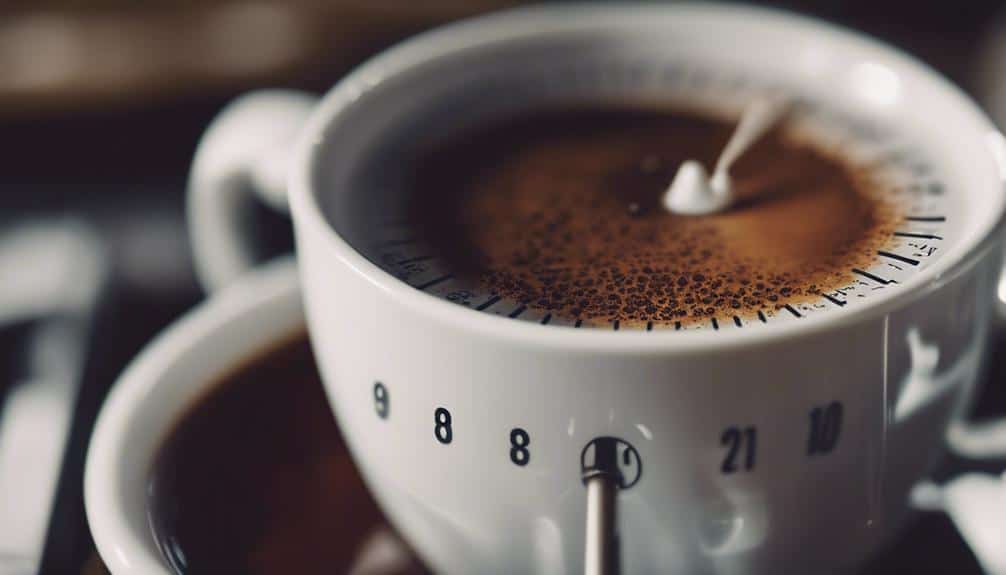
To achieve a perfectly balanced and flavorful coffee extraction, maintaining the water temperature within the recommended range of 195°F to 205°F is vital. The water temperature plays a pivotal role in the extraction process, influencing how various compounds in coffee are extracted.
If the water is too cold, under-extraction occurs, resulting in a sour and less desirable taste. On the other hand, if the water is too hot, over-extraction takes place, leading to a bitter and unpleasant flavor. It's like finding the sweet spot where all the flavors harmonize perfectly.
Understanding the impact of water temperature on extraction allows us to control the brewing process and produce a cup of coffee that's just right. By staying within the ideal temperature range, we guarantee that the extraction process is balanced, resulting in a rich, aromatic, and well-rounded coffee experience.
Impact of Temperature on Flavor
Exploring the intricate dance between temperature and flavor in coffee reveals a world of sensory delights waiting to be discovered. The impact of temperature on the flavor of coffee is profound, with lower brewing temperatures enhancing floral notes while decreasing acidity. On the other hand, higher temperatures can bring out complex and sweet notes in the beans, making the coffee more robust and flavorful. The differentiation between great and mediocre coffees often comes down to the brewing temperature, as it plays a critical role in influencing the final taste profile. Finding the best brewing temperature is essential as it plays an important role in extracting the desired flavors from the coffee beans.
| Aspect | Impact |
|---|---|
| Lower Temperatures | Enhance floral notes and reduce acidity |
| Higher Temperatures | Bring out sweet and complex flavors |
| Best Temperature | Critical for extracting desired flavors |
| Differentiation | Great vs. mediocre coffees influenced |
| Taste Profile | Influenced significantly by temperature |
Understanding how temperature affects the flavor of coffee is essential for brewing a perfect cup that tantalizes the taste buds.
Water Temperature for Different Brewing Methods
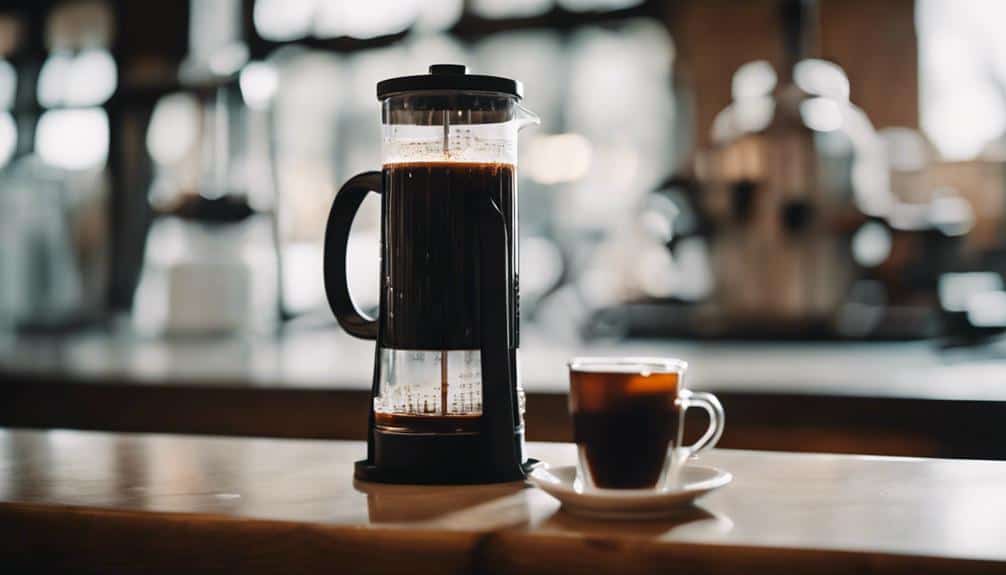
When it comes to brewing coffee, water temperature is paramount.
Let's explore the ideal water temperatures for various brewing methods, from the precise range needed for pour-over to the specific requirements of French press.
Understanding these nuances can elevate your coffee game to new heights of flavor and enjoyment.
Ideal Water Temps
Brewing exceptional coffee relies heavily on maintaining the ideal water temperature for various brewing methods, enhancing the flavors and aromas in each cup. The brew temperature plays a critical role in the final taste of your coffee.
Water temperatures between 195°F to 205°F are recommended by the National Coffee Association, guaranteeing perfect extraction. Lighter roasts shine when brewed at higher temperatures, while darker roasts should meet lower temperatures to prevent bitterness.
Consistency is key; keeping water temperature steady throughout the brewing process guarantees a balanced extraction and rich flavor profile. Investing in tools like thermometers or kettles with precise temperature control can help you hit the ideal temperature sweet spot for your chosen brewing method.
French Press Specifics
To realize the full potential of your French press coffee, maintaining the water temperature between 195°F to 205°F is essential for extracting the rich flavors and oils from the coffee grounds.
In the world of French press brewing, the water temperature plays a vital role in achieving the best extraction. This specific temperature range allows the coffee grounds to release their full flavor profile, resulting in a rich and aromatic cup of coffee.
Pour-Over Precision
In the domain of perfecting coffee extraction methods, the precision of water temperature is a defining factor for the rich flavors in pour-over brewing. Maintaining the water temperature between 195°F to 205°F is essential for a balanced and flavorful brew. This precise temperature range allows for ideal extraction without the risk of over or under-extraction, ensuring that the true flavors of the coffee shine through.
Adjusting the temperature based on the roast level of the coffee beans further enhances the brewing process, enhancing a spectrum of tastes in each cup. Consistency in water temperature is key; it sets the stage for a delicious pour-over coffee experience that's both satisfying and rewarding.
Mastering this precision elevates the art of pour-over brewing to new heights, delivering a superior and flavorful brew every time.
Controlling Temperature for Consistency
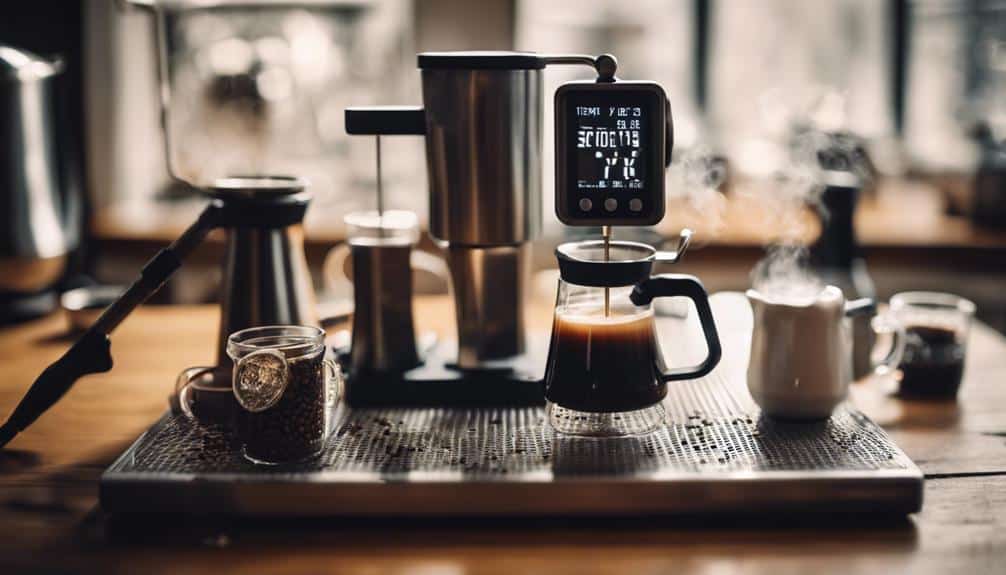
Maintaining a consistent temperature throughout the brewing process is essential for achieving the perfect cup of coffee. When it comes to controlling temperature for consistency, factors like brew time, temperature range, fluctuations in temperature, and proper kettle quality play a pivotal role.
To guarantee a uniform coffee quality, investing in a high-quality kettle that offers precise temperature control is a wise choice. Fluctuations in temperature can disrupt the brewing process, resulting in an inconsistent taste and strength in the final product.
By upholding a stable temperature, you can enhance the overall flavor profile of your coffee, guaranteeing a delightful and aromatic experience with every sip. Temperature stability isn't just about achieving the right brew; it's about crafting a masterpiece that tantalizes your taste buds.
Sustainability and Energy Efficiency
As a coffee enthusiast, ensuring sustainability and energy efficiency in the brewing process is an important consideration, especially given the significant carbon footprint associated with coffee production. Brewing coffee holds the highest carbon footprint in the coffee supply chain, making it essential to address energy consumption. Optimizing brew temperature can play a pivotal role in reducing unnecessary energy usage. High brew temperatures not only affect the quality of the coffee but also contribute to energy inefficiency during the brewing process.
Investigating the impact of brew temperature on energy consumption is necessary for sustainability efforts within the coffee industry. By advancing our understanding of brewing variables like temperature, we can work towards a more energy-efficient and sustainable coffee production process. This knowledge allows us to make informed decisions that can help in reducing the overall energy consumption associated with brewing coffee.
Sustainability and energy efficiency go hand in hand, and focusing on the brew temperature is a significant step towards a more environmentally friendly coffee brewing process.
Experimenting With Brew Temperatures
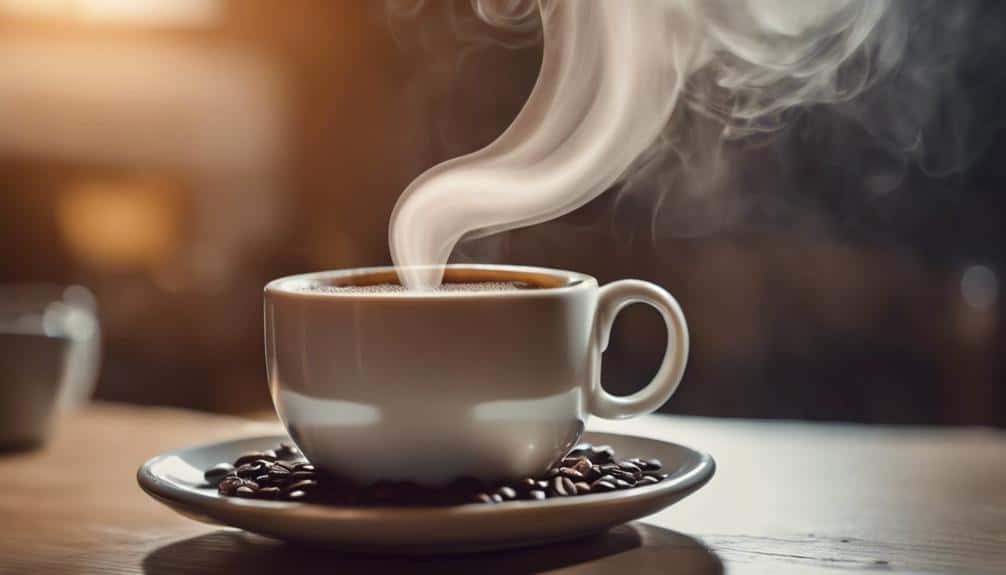
Playing with brew temperatures is like discovering a secret world of coffee flavors. As a coffee enthusiast, I've found that tweaking the temperature can reveal hidden notes and nuances in each cup.
Experimentation is key to finding that perfect balance for a personalized and exceptional coffee experience.
Optimal Brewing Temperature
Experimenting with brew temperatures opens a flavorful gateway to revealing the true potential of your coffee beans. By adjusting the water temperature and exploring different brewing methods, you can reveal a symphony of flavor profiles tailored to your taste preferences.
Each degree variance impacts the acidity and sweetness levels, offering a spectrum of taste experiences. Discovering the ideal brewing temperature for your favorite beans is akin to mastering a craft, where precision and intuition converge to create the perfect cup.
Embrace the freedom to experiment, to push boundaries, and to redefine your coffee ritual with each brew. The journey to finding your perfect brew temperature is a thrilling adventure that promises to elevate your coffee experience to new heights.
Impact on Flavor
Exploring the impact of brew temperatures on flavor profiles reveals a vast spectrum of taste experiences, each degree variation exposing a unique facet of the coffee's potential. Lower temperatures can accentuate floral notes, bringing a delicate and nuanced quality to the brew. This shift in temperature not only enhances the coffee's aroma but also plays a pivotal role in elevating the overall taste experience.
On the other hand, higher temperatures can draw out complex and sweet flavor notes, enriching the coffee's richness and depth. The interplay between temperature and acidity levels is essential; lower temperatures tend to mellow the acidity, while higher temperatures might intensify it.
Experimenting with these variables uncovers a world of diverse flavors, showcasing the significance of temperature control in crafting the perfect cup.
Temperature Control Methods
Exploring the intricacies of temperature control methods reveals a world of possibilities for enhancing the coffee brewing experience.
- Taste the Rainbow: Experimenting with different water temperatures can reveal a spectrum of flavor profiles in your brew.
- Heat it Up: Adjusting the temperature can intensify or mellow specific notes, allowing for a customized taste experience.
- Balance is Key: Understanding how temperature impacts extraction helps in achieving a harmonious balance of flavors in your cup.
- Brewer's Playground: Consistent temperature experimentation leads to mastering the art of brewing coffee, creating a personalized and exquisite coffee experience.
With each degree adjustment, a new dimension of taste awaits, beckoning you to explore and craft your perfect cup of coffee.
Conclusion
As a coffee enthusiast, I've learned that the ideal temperature for brewing coffee is the key to unleashing its full potential. By maintaining precision in temperature control within the perfect range of 195°F to 205°F, I can savor a balanced and flavorful cup every time.
Experimenting with different brew temperatures has allowed me to customize my coffee experience, making each sip a delightful journey of taste and aroma.
Cheers to the perfect cup of coffee!

